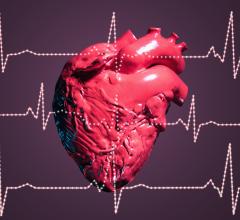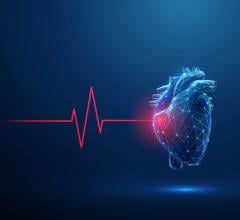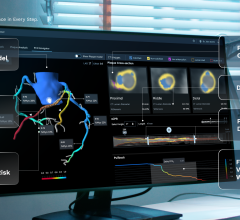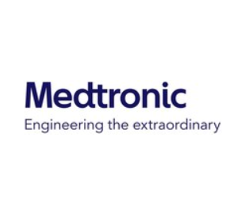
Getty Images
October 16, 2023 — A door-to-balloon (D2B) time of 90-minutes or less is associated with improved outcomes for heart attack patients. However, during the COVID-19 pandemic certain obstacles—including the need for COVID-19 screening, associated isolation procedures and terminal cleaning in the cardiac cath lab—led to increased D2B times. According to a new study, presented at the American College of Cardiology (ACC) Quality Summit 2023, many health care facilities are still recovering from the pandemic and facing new challenges, causing D2B times to continue to lag.
A myocardial infarction, or heart attack, occurs when there has been a blockage of the flow of blood to the heart muscle. An ST elevation myocardial infarction (STEMI) is often the most severe type of heart attack.
Delays in restoring blood flow to the heart muscle in heart attack patients (reperfusion) are associated with higher rates of mortality and morbidity. While some delays may be unavoidable—including uncertainty about diagnosis, evaluation and treatment of other life-threatening conditions, delays around informed consent and long transport times due to geographic distance or weather—D2B is the goal of getting heart attack patients from the emergency room (door) to the cath lab for a catheter to reopen a blockage in the heart (balloon) in 90 minutes or less. Recent research has determined that further decreasing D2B times is linked to improved outcomes and decreased mortality.
In April 2022, Ocean University Medical Center’s (OUMC) NCDR CathPCI data for the first quarter revealed a climbing D2B time of 73 minutes, which was well below their goal of 60 minutes. Prior to the COVID-19 pandemic, OUMC had averaged around 60 minutes for approximately two years.
“Some of the new national standards created in response to the COVID-19 pandemic created obstacles to heart attack care by adding minutes to D2B time. Although the incidence of COVID myocarditis increased during the pandemic and led to false activations, the total number of STEMI activations actually decreased,” said Sara Belajonas, MSN, MBA, CCRN, APN-C, Chest Pain Coordinator at Ocean University Medical Center in Brick Township, New Jersey, and author of the study. “I believe this created a scenario that our STEMI process was not utilized as often, therefore creating the need for re-education and the refocusing on the importance of time.”
According to the authors, heart attack hospitalizations decreased by 28% globally during the COVID-19 pandemic. It is suspected this is not due to a lower incidence of heart attack during this time but because patients did not seek medical treatment.
“We can learn a lot from these trends to help prepare ourselves for the future. Community education is imperative,” Belajonas said. “Utilizing past research and trends, we already know symptomatic patients are not getting the emergency care they need. All health care workers should do their part in educating the public on the importance of early heart attack care.”
During a review of the heart attack care processes, researchers examined the door-to-ECG (electrocardiogram), arrival to STEMI activation, arrival to case start and D2B. This review process determined that patients were spending too much time in the emergency room for an assortment of reasons that affected patient throughput and demonstrated the need for aggressive refocusing on time and process.
“I absolutely think other [health care] facilities face similar issues. One major issue arising from the COVID pandemic is national nursing and EMS shortages. These shortages hinder D2B and EMS to balloon times,” Belajonas said. “Many of these shortages unfortunately started during the COVID pandemic and have been linked to burnout. Simply, the demand for nurses and EMS workers outweighs what is available.”
It was also found that not all STEMIs brought in by advanced life support units were pre-activated, which is when the cardiac catherization lab at the hospital where the patient will be transported is notified in advance of the patient's arrival. This can allow patients to bypass the typical protocol of going to the emergency department first and instead go directly to the cardiac catherization lab, saving critical minutes.
According to the authors, the ongoing shortages of health care and EMS workers is concerning for future public health crises and STEMI care. Ongoing staff education will be key to ensuring stable processes and time management, as well as feedback and drills to identify gaps and opportunities. Research comparing pre- and post-COVID STEMI trends found a decrease in STEMI activation post-COVID, which was supported by OUMC’s own experience. There has also been an increase in STEMI over the last few months, according to Belajonas, who suspects we will see these trends repeat themselves as COVID numbers rise and fall.
Some of the processes that were implemented to reduce D2B times included:
- Re-education of the multidisciplinary team
- Involvement of additional staff to assist in the process
- Review of all STEMI cases with time interval drill down
- Re-education on ACC recommendation to pre-activate all field STEMIs regardless of transmitted ECG
- Re-education on STEMI prep
- Annual STEMI drills completed, including new heart and vascular to familiarize staff with cath lab 1 and 2
- Collaboration with emergency medical services (EMS) to drill down transport delays
At the end of 2022, OUMC D2B time had reduced from 73 minutes to 72 minutes. However, recent months have shown continued improvement. In August 2023 they made their goal of 60 minutes.
For more information: www.acc.org
Related Long-COVID Coverage:
ACC23 Study Finds Long COVID More Than Doubles Risk of Developing New Cardiac Symptoms
ACC Scientific Session 2023 to Feature Smidt Heart Institute Experts
MRI Sheds Light on COVID Vaccine-Associated Heart Muscle Injury
What We Know About Cardiac Long-COVID Two Years Into the Pandemic
VIDEO: Long-term Cardiac Impacts of COVID-19 Two Years Into The Pandemic — Interview with Aaron Baggish, M.D.
VIDEO: Long-COVID Presentations in Cardiology at Beaumont Hospital — Interview with Justin Trivax, M.D.
VIDEO: Cardiac Presentations in COVID Long-haulers at Cedars-Sinai Hospital — Interview with Siddharth Singh, M.D.

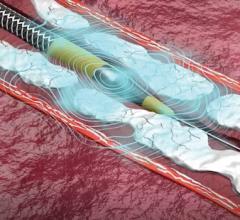
 November 14, 2025
November 14, 2025 

